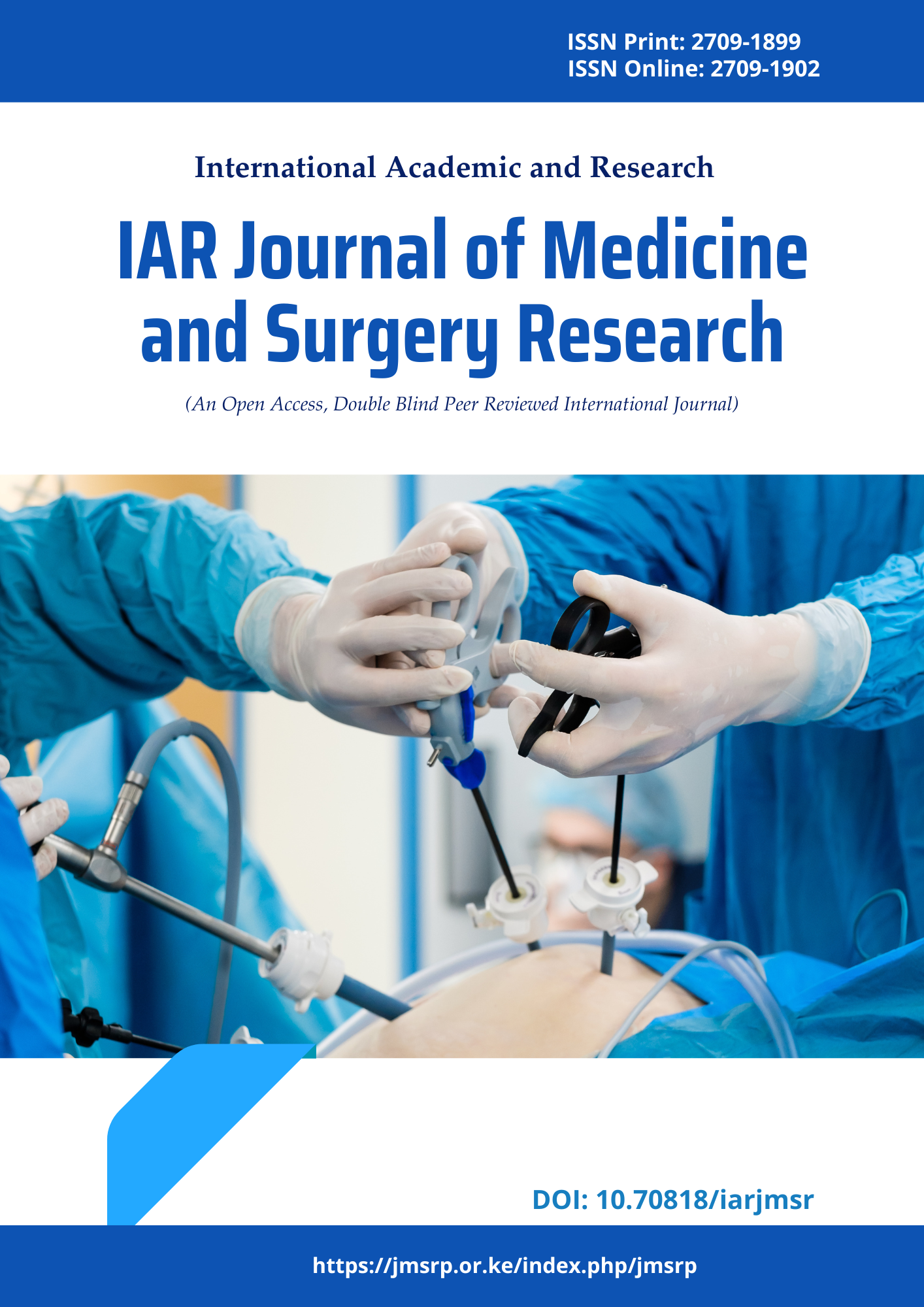Rare Presentation Heterogeneous Pregnancies
DOI:
https://doi.org/10.47310/iarjmsr.2021.V02i02.04Keywords:
hCG, pregnancy, heterogeneous, Ectopic, Pelvic ultrasound.Abstract
It is done and corrected two cases in General Hospital, Babylon, Iraq Vaginal bleeding, scanty discharge that differs from the timing and amount of a normal menstrual cycle and / or abdominal pain may indicate pregnancy loss (uterus or ectopic) in the early stages. Pregnancies with unclear viability to the fetus can be detected by chance during a routine or antenatal ultrasound. For a correct clinical diagnosis, it is important first and foremost to exclude ectopic pregnancy, gestational trophoblastic disease and spontaneous abortion. When evaluating a pregnancy in the womb, a differential diagnosis is made between a normal pregnancy, a miscarriage (complete or incomplete), or an ectopic pregnancy. The susceptibility and location of pregnancy should be determined at the same time during a visit to a pregnant woman with symptoms of bleeding and pain. The single test most useful to distinguish between an uterine pregnancy and an ectopic pregnancy is an ultrasound scan with the-hCG blood test. The primary diagnostic test for women with an ectopic pregnancy is to measure the levels of the hormone hCG in the blood. A negative test excludes pregnancy, including ectopic pregnancy. Detection of a uterine pregnancy with a transvaginal ultrasound in most cases excludes an ectopic pregnancy, because the so-called "ectopic" pregnancy (having an uterine pregnancy and an ectopic pregnancy) is extremely rare ─ only in 1: 7000-1: 30,000 cases. However, the risk of a possible heterogeneous pregnancy increases with the use of assisted reproductive technologies, when their frequency reaches 1%. Maternal serum β-hCG and high-resolution ultrasound are complementary. Levels of Β-hCG in an ectopic pregnancy may be higher or lower than the discriminant level. An abnormal ectopic pregnancy can occur at any level of hCG. To diagnose an ectopic pregnancy, dynamics or urgent hospitalization is required.
















